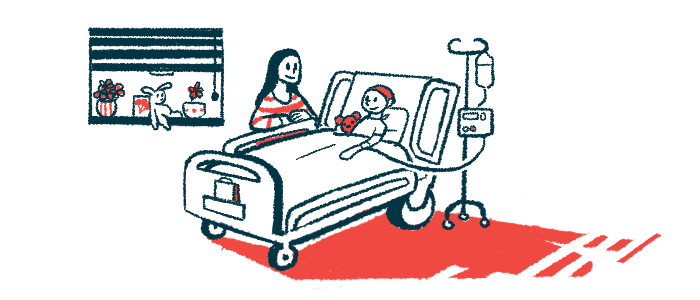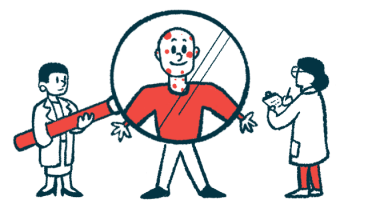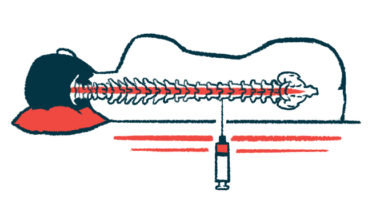Table position in girl’s scoliosis surgery causes complications
13-year-old experienced severe drop in blood pressure, oxygen levels

A girl with spinal muscular atrophy (SMA) undergoing surgery to correct scoliosis, an abnormal sideways curvature of the spine, experienced a severe drop in blood pressure and oxygen levels due to the position of the surgical table, according to a case study.
The tilt of the table that allowed easier access to the spine put pressure on her already-deformed chest cavity, which compressed the arteries leaving the heart, thereby causing blood flow problems, surgeons suggested.
When the table was returned to a horizontal position, the surgery was successfully completed, which subsequently improved the girl’s breathing and sitting abilities.
Imaging before surgery may help “guide the surgical positioning to minimize mechanical compression of the thoracic [chest] cavity, thereby helping the patient complete the surgery safely,” researchers wrote.
The study, “Profound hypoxemia and hypotension during posterior spinal fusion in a spinal muscular atrophy child with severe scoliosis: a case report,” was published in the journal BMC Anesthesiology.
SMA can affect muscles around spine, leading to scoliosis
The muscle weakness and wasting that marks SMA affects the muscles around the spinal column, which can lead to scoliosis. Because the lungs have less room to expand, scoliosis can cause breathing difficulties. Kyphosis, or the forward rounding of the back, also called hunchback, can occur, sometimes alongside scoliosis.
Milder scoliosis can be treated with braces to help support the ribs and spine. In more severe cases, surgery is required to improve mobility and ease breathing.
During scoliosis surgery, patients lie in a prone position, or face down. However, this may compress the chest wall and reduce heart function and blood flow, which can be worsened in patients with more severe deformities of the chest cavity.
In this report, researchers in China describe the case of a 13-year-old girl with SMA and severe scoliosis and kyphosis who experienced a marked drop in blood pressure (hypotension) and blood oxygen (hypoxemia) during spinal surgery.
She was diagnosed with SMA type 2 at 9 months of age based on symptoms of muscle weakness, difficulties sitting and holding up her head, loss of muscle reflexes, growth delays, and genetic tests. By 8 years old, she developed progressive scoliosis and kyphosis. She also had multiple joint contractures, causing deformities of the elbows, wrists, hips, and knees.
Girl’s scoliosis worsened despite treatment
The girl had poor lung function, and CT scans showed an asymmetric chest cavity, with a narrowing of the airways and a partially collapsed lung. Despite treatment with the approved SMA therapy Spinraza (nusinersen), her scoliosis and kyphosis progressively worsened. Thus, corrective surgery was recommended.
For surgery, she was positioned in the prone position without changes to blood flow or oxygen levels. The operating table was then tilted about 45 degrees to the right to improve access to the left side of the spine. About two minutes after adjusting the table, however, she developed a significant loss of blood pressure and blood oxygen levels and an elevated heart rate.
She was treated with medication to improve blood flow but with no change. As such, surgeons temporarily stopped the procedure. While reviewing her CT scan, the doctors noticed that her chest cavity was severely distorted, and its volume was markedly reduced.
To explain the complication, the team suggested that the tilt of the surgical table put significant pressure on the chest cavity, severely compressing the pulmonary artery, the main blood vessel that supplies the lungs, leading to low blood pressure and oxygen.
After the table was returned to a horizontal position, the girl’s blood flow and oxygen levels began to normalize. The team then decided to continue the surgery and complete it with minimal invasiveness.
Lung function, sitting abilities improved after surgery
Surgery was eventually completed without further complication, and the girl’s lung function improved compared with the beginning of the surgery. She continued to improve during follow-up and was discharged from the hospital without complications. Nearly one year after surgery, her sitting abilities improved significantly.
“Here we describe a case of successful treatment of intraoperative hypotension and hypoxemia,” the researchers wrote. This “resulted in a positive outcome for an SMA patient who did not tolerate the tilted-prone position, pointing out another major [disease-related] abnormality that may occur during scoliosis correction surgery.”
“Further studies are needed to determine whether hemodynamic [blood flow] and respiratory compromise can be predicted in certain SMA patients prior to surgery, especially those with severe thoracic and spine deformity,” the researchers noted.










